Training Management System
Training Management Software for Personalized Training with Certification
Empower Your Employees with the Latest Tech Trends Through Our Automated Training Management System.
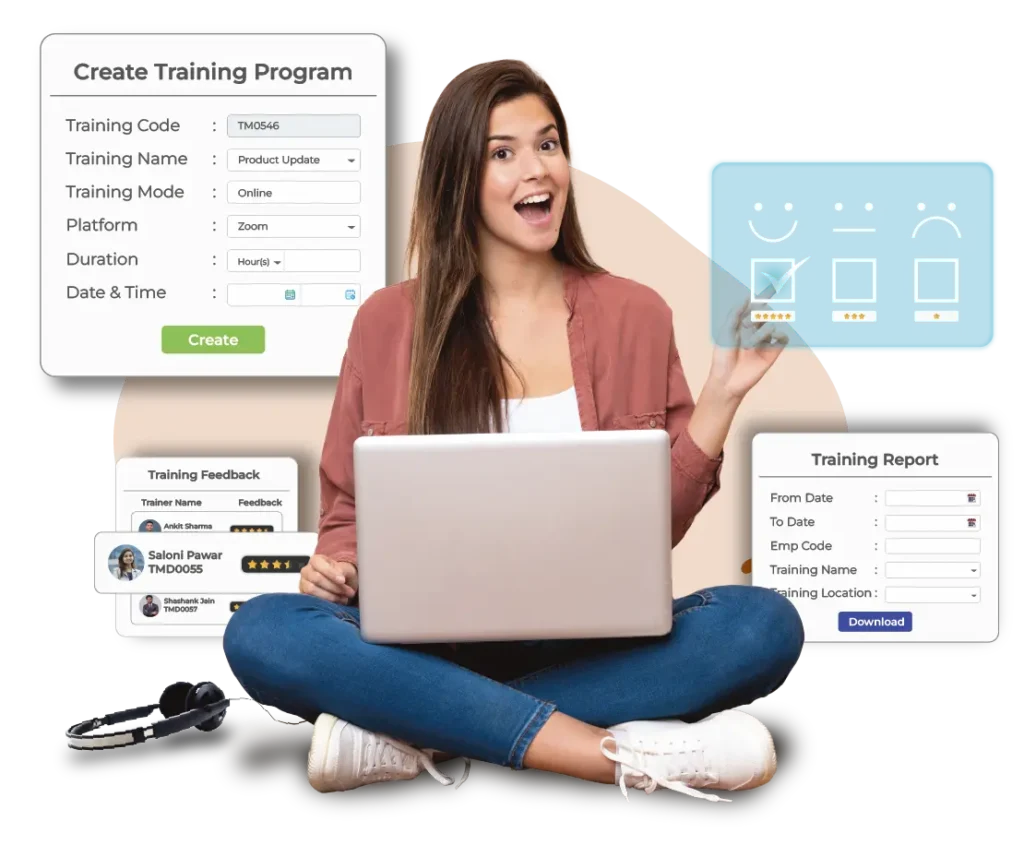
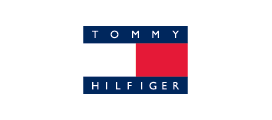


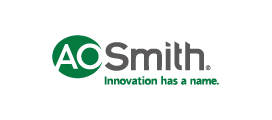




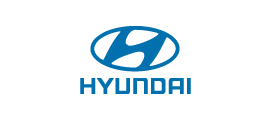
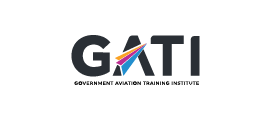



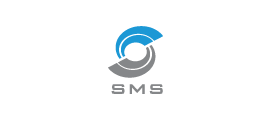


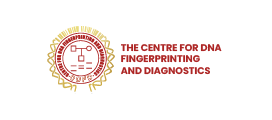

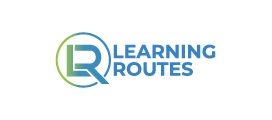

Simplified Training Management System
Next-gen Training software with certification
Educate employees about upcoming skills through the use of rich-media content.
Creating Personalized Training Programs
Robust personalized features when choosing course types, trainer details, session duration, cost range, certification, etc.
Training Parameter Setup
Seamless setup of parameters such as employee training eligibility, passing percentage, location, trainers, and more.
Training Dashboard
Interactive training dashboard with customized training sessions and efficient feedback mechanism.
What is Training Management System?
A training management system is a set of tools that automate the training programs, including administration, documentation, tracking, report generation, etc. Integrating with the HRMS software, the tool offers auto-tracking functionalities of employee performance during training and generates reports accordingly, providing a flexible solution for your training needs.
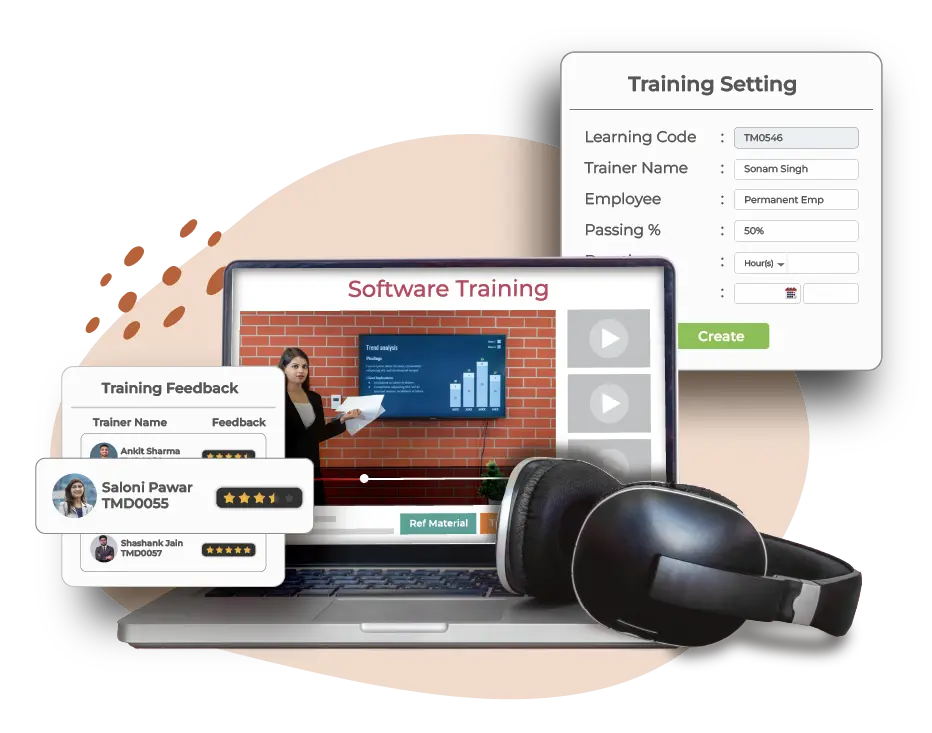
Efficient Employee Performance Tracking
Smooth Training Management for tracking employees' performance effectively
Simplified employee training with personalized tools like quizzes, certificates, calendars, etc.
Rich Media Reference material
Highly customizable training management with rich media assistance and innovative branding experience.
Trainers Detailed Information
Empower employees with personalized trainer details and give them control in choosing their trainers.
Timely Email Reminder
Notify the employees with timely email reminders from their payroll software to ensure their training attendance.
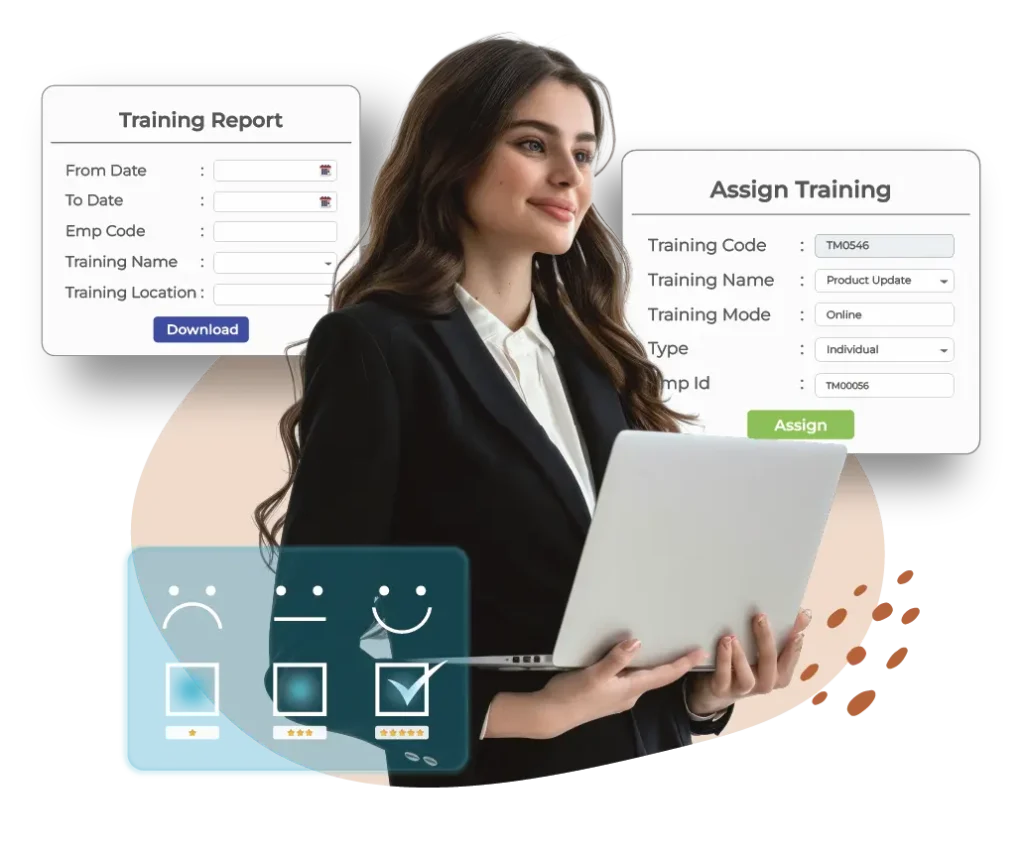
Online Employee Training
On-time report generation with auto-tracked training assistance
Mobile accessible training management solution with advanced ESS, performance management and report generation tools.
Customized Individual Sessions
Customized individual employee sessions to clarify difficulties and confusion related to employee assessments.
Report Generation
In-depth employee performance analysis and custom report generation with efficient ESS assistance within HRMS payroll software.
Transparent Feedback Mechanism
A transparent feedback mechanism with rewarding options for the administrator and employee is also needed.
Product Brochure
What Are the Common Functions of Training Management System?
A Training Management System has numerous standard functions that facilitate employee training and development within the organization. Here are some standard key functions are following,
- Course Management: Employees can avail of multiple courses like the session details, scheduling, managing materials, etc on one platform.
- Learning Management: Trainers track employee learning and performance through the learning management system and other PMS tools.
- Auto Scheduling: Administrators can auto-schedule employees’ training times and course details, and employees can schedule their own courses through ESS.
- Streamlined Registration: Learners can smoothly operate the dashboard through the quick and simple registration or 2-factor verification process.
- Assessment and Evaluation: Associated tools and techniques, such as tests, quizzes, assignments, and employee assessments, evaluate the users’ progress and development and generate reports accordingly.
- Robust Security: Robust security & compliance-proof training platform ensuring end-to-end privacy regulation by managing user roles, permissions, and access levels.
- Seamless Communication: Transparent communication during training between learners, trainers, and administrators through notifications, messaging, and other collaboration tools.

Management
Employees can avail of multiple courses like the session details, scheduling, managing materials, etc on one platform.
and Evaluation
Associated tools and techniques, such as tests, quizzes, assignments, and employee assessments, evaluate the users’ progress and development and generate reports accordingly.
Management
Trainers track employee learning and performance through the learning management system and other PMS tools.
Scheduling
Administrators can auto-schedule employees' training times and course details, and employees can schedule their own courses through ESS.
Communication
Transparent communication during training between learners, trainers, and administrators through notifications, messaging, and other collaboration tools.
Registration
Learners can smoothly operate the dashboard through the quick and simple registration or 2-factor verification process.
Security
Robust security & compliance-proof training platform ensuring end-to-end privacy regulation by managing user roles, permissions, and access levels.
What HRs think of Pocket HRMS
“We have been using Pocket HRMS Software for a year and are very happy with our choice. Excellent service support.”
– Niranjana Neelakantan
HR Director, TESSOL
“The support team is highly admirable. Their professional and polite approach to our queries is simply excellent.”
– Nishant Mahajan
Corporate GM-HR, EvolveBack
“Data monitoring & HR analytics are made easy by Pocket HRMS, it is upcoming the future of the HR industry”
– Sonal Gangwani
HR Manager, Ignatiuz
Resources for HR and People leaders
People Management Strategies
Master the art of people management strategies with our comprehensive Manager’s Guide. Discover 16 effective strategies.
Tips to Train Your Employees to Work Remotely

First, companies should not expect that an employee who is productive in the office will also be successful as a remote worker.
Key Talent Management Process

Talent Management talks about managing talent and maintaining talent retention in your company for years.
What is Training Management?
Training management is the process of organizing training sessions for an organization. It spans all aspects of training such as scheduling the sessions, managing the logistics and required resources, arranging the sessions, keeping track of the costs involved, administering quizzes, generating reports, etc.
Why should one use a Training Management System?
An employee training management system accelerates the entire training process by,
Automating the customizable training needed for every employee
Auto-managing the training budget for every training session.
Sending notifications to employers and employees about the training sessions
Providing seamless tracking features and offering streamlined report generations
Offer an e-certificate to every employee who passes the training program.
How is gamification used in training management systems software?
Gamification is a game-based mechanism used to engage people and encourage them to attend and process what tasks they will process. Employers use gamification in online training software to motivate employees to process tasks and attend to responsibilities for ultimate output. The gamification process allows employees to complete their predefined tasks on time, achieve meaningful targets, and get upper-level feedback.
Can a training management system track the employee's progress?
An employee training management system is a set of tools that automates employee tracking during their training and development phase, generates reports, and stores them accordingly. Besides, integrating with another system like KPI and other performance trackers helps the employee to track and evaluate the employee’s progress and success.
Does training management system software support multiple languages?
The training management system software generally offers multi-language support so companies from different regions can smoothly use the software. But before deploying, it is essential to review the functionalities offered and choose them according to the requirements.
Can I customize the training management system to fit our specific needs?
You can customize the online training software by adding your required features and functionalities or removing extra add-ons.
Can the training management software integrate with our existing HRM systems?
Yes, the training management system software can easily be integrated with the existing HRMS system and other associated employee management tools and functionalities.
What Is Training Management System?
A training management system is a set of tools that empower HR professionals by automating the customized commercial training process for employees.
It is a centralized platform that understands employees’ unique requirements, selects relevant courses, tracks their performance, and generates reports by saving employers time and manual practices.
According to verified market research in 2023, training management software’s market value was USD 16.3 billion. By the end of 2030, it is expected to reach USD 42.8 billion with a CAGR of 12.8% during the Forecast Period 2024-2030.
What Is The Difference Between TMS and LMS?
In layman’s language, training management and learning management systems are similar. But people need clarification when discovering the myriad distinctions that set them apart. Let’s explore the topic of online employee training and online employee learning.
TMS | LMS |
Training management solution stands out with its unique ability to oversee the entire operation, from planning and analysis to execution and logistics. | Learning management software, a comprehensive web page-based technology, is dedicated to nurturing employee learning and development, instilling confidence in educators and corporate training professionals. |
The training management platform is mainly used for logistics and supply chain management, where newly joined workers must be trained. | The learning management system is used in educational institutions and IT sectors to educate employees through corporate training and professional development. |
A training management system is software that plans training schedules, audits freight, tracks real-time employee performance, generates reports, and more. | Learning management systems are solutions that manage employee careers by providing domain-specific knowledge, course administration, content delivery, assessment scheduling, and report generation. |
Companies integrate the training management platform with their HRMS solution to experience the one-stop solution for all employee management within a limited budget and improve delivery efficiency. | Companies accept the learning management system to enhance learning outcomes and track employees’ progress in their training field. |
The cost of the employee training software is based on the scope of training. | The learning management system’s pricing is based on the educational size, learners’ headcount and future needs. |
How Does Training Management Software Work?
The training management system is used differently depending on who is using it. The administrator should acknowledge how to set up and use the system. For the learner, it is all about utilizing the system for better results.
Here is a practical guide on how to use it from both perspectives.
For Administrators
Initial Setup and Configuration
After the software subscription, employers must set it up according to the organization’s needs. It includes adding employee data, defining users’ roles, granting each permission, and completing the integration with another system. Employers can also set language preferences, time preferences, and email preferences.
Course Management
Next, employers must add the course details like objectives, content modules, training duration, course type, prerequisites, etc. They can organize the courses into catalogues to enhance the simplified user interface for learners.
Another essential addition is a seamless enrollment process, which includes self-enrolment, manager approval, or automated enrollment based on criteria.
User Management
The third step is integrating the employment database management system with the TMS solution to store employee data easily. Based on the responsibilities, the administrator can assign appropriate roles and permissions.
Tracking and Monitoring
The fourth step is to track the learner’s progress and participation through dashboard analysis and report overview. Employers or trainers can check and monitor the employees’ course completion rates, quiz scores, and other relevant metrics.
Assessment and Feedback
Using different built-in assessment tools to create quizzes, exams, or periodic assessments and evaluate employee performance is the fifth step of using the training system. During processing assessment, initiating the feedback mechanism from employees is also helpful for better future training planning.
Compliance and Certification
Employers must ensure the learners meet the regulatory and organizational requirements throughout the training program arrangement. They should also manage the certification process and set up reminders for certification renewals, whether any learners need to.
Reporting and Analytics
The step from the administrator’s end is generating employee performance reports and analyzing trends and metrics to identify areas for improvement to initiate data-driven decisions.
For Learners
Access the system
The first step for users is to sign up for the system, creating their username and password. Then, they can navigate the dashboard to find available courses and access them thoroughly.
Enrolment
The second step is to enrol in their required courses. If permitted, this process is executed through self-enrolment or by requesting approval from an administrator.
Course details
The third step is to inquire about the courses the users require and access the comprehensive materials, such as modules, videos, documents, and quizzes. With the assistance of the ESS portal, users can thoroughly prepare and monitor their progress using the TMS dashboard.
Assessment and Feedback
Again, with the help of ESS, users can perform self-assessments after completing any course and track their performance through the Performance Management System (PMS).
With the TMS, users can use the feedback option to provide feedback on the course, assessments, or teaching techniques.
Certification
Using the ESS functionalities, users can receive certificates for their past courses and be notified of upcoming certification renewals or required training updates.
Support and Assistance
Users can get on-time customer support assistance within the training management portal. In some systems, there is an AI-generated help desk where users can ask any queries related to their courses. Often, there are open communication options through QA sessions to talk with the trainers.
Importance Of The Training Management System
In this section, we will highlight the importance of the employee training software in detail so that you will have a fair idea about the reason behind deployment before initiating integration. The following significance of training software are,
1. Boosted Employee Performance
Employees of any company find satisfaction in a training program that caters to their specific needs, fostering their self-development. In the face of advancing tech trends, every employee must stay updated. Training management solutions and tailored training tools equip employers to design customized training programs for each employee. They track their progress and generate comprehensive reports, ingraining confidence in employers that they are effectively meeting their employees’ needs.
2. Auto Training Scheduling
A training management solution auto-schedules the training and customizes sessions for every employee. Moreover, the dedicated tracking tools track employee performance and generate reports accordingly. Employers do not have to perform any training-related task throughout the process except to store employee data on the training management platform. This process often appears automatically if the staff training software integrates with the other HRMS software.
3. Compliances Regulation
A training management system centralizes overall employee training records, ensuring all employees receive sufficient training at the right time. It also automates reminder notifications for renewal dates and updates, ensuring ongoing compliance with regulatory standards. Moreover, the system offers comprehensive documentation and related reporting capabilities, providing organizations with audit-ready reports and demonstrating adherence to compliance standards, instilling trust and confidence in its reliability.
4. Centralized Training Updates
Training management software ensures a centralized training platform that commences on time with training schedules, content updates, customized training sessions, auto-tracking facilities, and on-time report generation for every employee. With the assistance of the related training tools, management can smoothly update the training materials that reflect the latest regulations and internal policy changes, which ensures employees acknowledge recent trends related to the training and development process.
5. Cost Effective
Leveraging the user-friendly training management platform, organizations can effortlessly measure the cost of every training session. The system’s intuitive features, such as auto-reminders of spending, budget planning, and designated amounts for each training session, are designed to alleviate employers’ stress of extra expenditure.
Moreover, the system allows organizations to smoothly measure the limitations of operational expenses, travel time, on-site visits, etc. The company can minimize the training program’s planning cost by integrating with the LMS.
6. Seamless Integration
Training management systems can easily be integrated with the document management system (DMS), performance management system and related tools, and tracking apparatus. Hence, deploying the training management assistance and aligning it with the employee engagement tools helps employers receive the right deliverables and employee data before commencing the decision-making process.
7. Employee Engagement
Training management solution and associated employee performance tracking tools offer employees a variety of relevant courses they can choose from at any time. It provides a scope to enhance knowledge and stay up to date with trending technologies. It also makes employees feel valued and satisfied during their working tenure and try their best. Thus, all this leads to employee engagement and retention for an extended period.
What Are The Features Of The Training Management System?
An effective training management system comes with numerous key features that align with other HRMS solutions to provide a better experience for both employees and employers. The features ensure a streamlined training process for every employee after evaluating their requirement and scope for development and related product success. Here are the top TMS features:
Course Management
One of the essential features of training software is automating course management among employees, bringing more efficiency to the workplace.
HRs often need help with selecting relevant courses that employees require, and the correct courses for the right employees may lead to unproductive spending. With its associated features, training software supports employers in making decisions about which course content is suitable for which employees, reducing the overwhelming management of training strategies.
CRM Integration
With customer relationship management (CRM) and time management systems, training software and associated tools deliver a high-end user experience by optimizing training programs and course-related activities. The training software can easily select personalized course recommendations for employees and professionals by aligning with the related CRM functionalities. It even improves employee performance tracking, reflecting an enhanced conversion rate with improved sales structure.
Smooth Training Enrollment
Manually arranging the training process is quite challenging and hectic for employers. Training management platforms provide a seamless, finger-fast technique for applying for training courses. Let’s examine how the software simplifies the enrolment process for employees.
It offers a seamless online registration portal where participants can easily browse available courses, view their in-detailed descriptions, and select preferred training sessions based on their schedules and interests.
It allows participants to register individually or in groups, with capabilities for bulk registration and managing discounts or promotional offers.
It integrates secure payment processing mechanisms, enabling participants to pay fees online conveniently via various payment methods.
It automates confirmation and communication processes, sending immediate confirmations upon successful enrolment and reminders closer to the training dates.
It gives administrators real-time visibility into enrollment metrics and participant lists, facilitating proactive management of class sizes, resource allocation, and overall training logistics.
Report and Analytics
Timesheet management, powered by TMS Analytics, is highly adaptable and can cater to the company’s training needs. It offers functionalities such as accurate report generation and data analytics using advanced algorithms and data visualization techniques. TMS Analytics collects data, identifies training patterns and trends, potential knowledge gaps, and the entire ROI, and generates reports accordingly.
Employers set benchmarks and goals integral to reporting and analytics within the time-tracking software. The TMS aligns with the KPI for measuring employees’ performance by tracking their productivity, efficiency, and adherence to the set goals.
Training Progress Tracking
Employee training software ensures the efficiency of the entire training management process. It automates the training schedule according to the employees’ requirements, tracks their performance, generates reports, and, with the help of KPI, stores the data on an employee data repository. In the entire process, the employers must put the employee’s preliminary data, like work domain, joining date, employee position, etc., on the TMS dashboard.
Integrated e-learning
The training management system offers e-learning facilities to employees, which they can take advantage of from anywhere, anytime. The tool has high-end functionalities like intelligent algorithms, data analytic features that understand the individual’s needs, and tailored relevant training courses for the right employees. Even the associated tracking tools track employee performance during courses, generate reports and deliver them to employers. Employers only need to store employees’ basic details in the system database.
The e-learning facility addresses every employee’s pace for improvement; they can easily avail themselves of remote work.
Digital Certification
With certification management assistance, training software tracks employee training progress and certifies them for upcoming responsibilities. By automating the certification process, the training software significantly reduces the time employers spend evaluating employees’ performance, thereby relieving them of administrative burden and generating trust in employees’ minds that they will feel valued.
Mobile Accessibility
The staff training software comes with cloud-based mobile assistance, providing real-time information and delivering media-rich training facilities that employees can operate from anywhere. The micro-learning feature accommodates employees’ busy schedules, allowing them to break up their daily course into 5— or 10-minute segments. The mobile interface further enhances the employer-employee experience, providing easy access to upcoming classes and the performance of their last course using the associated mobile application.
Gamification
Besides the high-end branding, an excellent end-to-end user experience is needed to attract employees. They become jaded with the dull training dashboard and apathetic about attending further sessions. Staff training software with added microlearning and gamification strategies makes the courses more interactive and engaging. Along with involved templates like Find-a-Word, Elevator Game, Image/Word Match, and Jeopardy, TMS can break down the lengthy training content into short-form lessons, effectively allowing employees to avail themselves of their required courses within the proper timeline.
What Are The Benefits Of A Training Management System?
1. Cost Effective
Organizations face numerous challenges while measuring training-based operational charges on trainer arrangements, proper study material selections, certificate printing, etc. Moreover, if the training is physically arranged, it costs a lot in terms of travel time or on-site trainer visits. Training software with LMS and PMS assistance lowers the overall operational costs by automating course selection and assessment preparation, generating results, and storing them in the repository for future analysis. Overall, it ensures more efficient budget locations.
2. Assist employees to grow.
A training management system with added performance tracking and learning management assistance helps employees stay motivated and engaged during their work tenure. Employees always need to be updated with the latest tech trends. Proper training facilities, acute evaluation, and certification ensure their growth within the organization. They feel valued every time, leading to employee engagement and retention for extended periods.
3. Administrative Assistance
Training software eliminates day-to-day administrative work and delivers a seamless experience to employers in daily repetitive tasks and responsibilities. Using the TMS software, HRs get the ready-made employee performance sheet when processing HRMS payroll. To run a successful training, employers must submit the employees’ personal details and professional documents to the Training software repository.
4. Centralized Access
The training management system is a centralized platform with LMS and PMS features and functionalities. This allows organizations to track and evaluate employee performance efficiently, saving them valuable time. Moreover, it offers CRM and training reporting functionalities, eliminating the need to repeat data. Companies also appreciate the cost-effectiveness of paying only once for numerous functionalities.
5. Streamlined Training Processes
The advanced capabilities of the cloud-based staff training software ensure automated training processes for every employee who requires it. The system also categorizes the training courses according to employee domain, understanding that each employee has unique training needs. It is reflected in the system’s ability to set up training schedules, create assignments, track employee participation rates, and generate reports.
Who Uses The Training Management System?
Several stakeholders use the training management software to train their employees on new tech trends, product acknowledgement, project understanding, etc.
The training administrators primarily manage and oversee the entire training process.
Participants use the TMS to attend training sessions, register for courses, access training, complete assessments, check reports, receive certificates, and more.
HR professionals also use the TMS software to maintain an in-detailed employee performance record and improve project allocations and HRMS payroll processes. It is also effective for managing attendance through the attendance management system.
The management uses the portal to track the company’s overall employee and project management.
How Do You Find The Right Training Management System?
Ease of Use
Before deploying the training software, ensure it is easy to understand and use. In other words, it should be at a layman’s skill level without needing code language.
Flexibility
Another key element in employee training software is whether the system provides flexible useability. Often, employees need more time to attend training sessions between work hours. Flexible training software delivers end-to-end solutions. Hence, users can use it anywhere, anytime, and it should also be modified and adaptable for all training programs.
Customization
Every employee has different needs; hence, they require courses according to their career requirements. So, the TMS solution must be smoothly customizable regarding course options, course duration, payment packages, portal options, etc. Highly customizable software makes the employees feel valued and helps them experience company branding.
Collaboration
Proper collaboration and communication are essential key elements in training software solutions. Internal collaboration among team members and with management increases transparency during training. Often, continuing digital training needs to be clarified for employees. An add-on QA platform within the TMS system enhances trust and clarity in employees’ minds, as they can share their difficulties during training with faculty, ask queries, and solve problems collectively. Accurate collaboration increases employee engagement and delivers better results.
Language Support
People prioritize their mother language when acquiring knowledge for future growth, so the training software must have multilingual support to improve the employee experience. The system should provide options for multiple interface languages, instant choice options, multilingual assessment options, report generation, etc. Multilingual support must make employee learning more personalized and convenient.
Assessment Arrangement
Training assessment is the key element for evaluating employee performance after completing courses. So, it is essential to notice whether the system arranges the proper assessment just after course completion. Ontime assessment arrangements help the administrators analyze the employee knowledge gap, check competency, and identify the areas where employees require more sessions. The Assessment options come with numerous quiz-making tools and self-assessment test options.
Certification
Rewarding employees is one key element that motivates and engages them in the workplace, enhancing productivity and business growth. Certification of employees for the courses they just finished can be an outstanding process for making employees feel valued and satisfied. So, it is mandatory to inquire whether the TMS supports custom certification with course delivery.
Pricing
Before final pricing, ensuring that the system offers transparent and fair pricing without hidden costs is mandatory. Methodically, the price should depend on the number of users, the organization’s size and the implementation scope. It is also essential to check whether the training platform in integrated with the payroll software as well.
Customer Support
An on-time customer service facility is the backbone of every software integration. The software’s user manual should be transparent and direct so new users can easily use it without asking questions. If there are some still, on-time customer service functionalities can easily ease the users’ difficulties and simplify the process flow.

